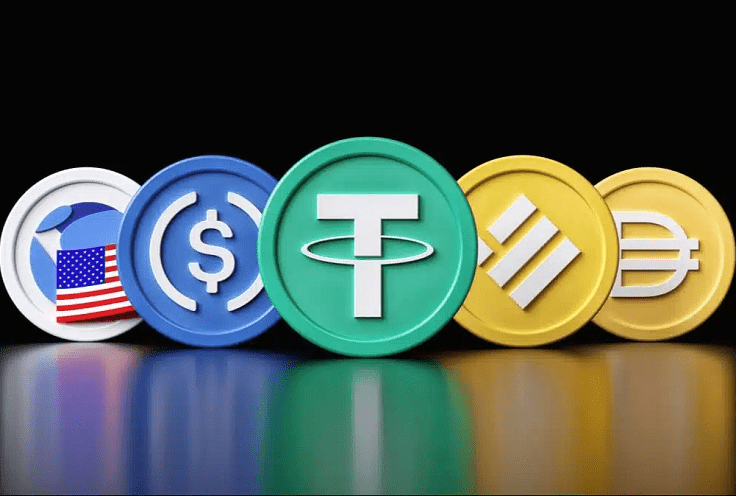
Stablecoins have emerged as a vital component of the cryptocurrency ecosystem, offering a bridge between volatile digital assets and traditional financial systems. Designed to maintain a stable value, stablecoins are increasingly being used for payments, remittances, and as a store of value. But are they the future of digital money? This article explores what stablecoins are, how they work, and their potential to transform the global financial landscape.
What Are Stablecoins?
Stablecoins are cryptocurrencies designed to minimize price volatility by being pegged to a stable asset, such as a fiat currency, commodity, or even another cryptocurrency. Unlike Bitcoin or Ethereum, whose values can fluctuate significantly, stablecoins aim to maintain a consistent value.
Key Features of Stablecoins
- Price Stability: Reduces volatility compared to traditional cryptocurrencies.
- Liquidity: Easily convertible into fiat or other cryptocurrencies.
- Global Accessibility: Can be accessed and used anywhere with an internet connection.
- Blockchain-Based: Offers transparency, security, and fast transactions.
Types of Stablecoins
There are three main types of stablecoins, each with its own mechanism for maintaining stability:
1. Fiat-Collateralized Stablecoins
- How They Work: Backed 1:1 by fiat currencies like USD, EUR, or GBP. Issuers hold equivalent reserves in bank accounts.
- Examples: Tether (USDT), USD Coin (USDC), Binance USD (BUSD).
- Pros: High stability, widely accepted.
- Cons: Requires trust in the issuer’s reserves and audits.
2. Crypto-Collateralized Stablecoins
- How They Work: Backed by cryptocurrencies, often over-collateralized to account for market volatility.
- Examples: Dai (DAI), sUSD.
- Pros: Decentralized and transparent.
- Cons: Subject to fluctuations in the underlying crypto asset.
3. Algorithmic Stablecoins
- How They Work: Use algorithms and smart contracts to control supply and demand, maintaining a stable price.
- Examples: TerraUSD (UST), Ampleforth (AMPL).
- Pros: No need for collateral.
- Cons: High risk of instability during market downturns.
Benefits of Stablecoins
- Seamless Transactions:
- Enables quick, low-cost cross-border payments.
- Avoids delays associated with traditional banking systems.
- Hedging Against Volatility:
- Provides a safe haven during market downturns.
- Access to DeFi:
- Used extensively in decentralized finance (DeFi) applications for lending, borrowing, and trading.
- Financial Inclusion:
- Offers access to stable financial instruments in regions with volatile local currencies or limited banking services.
Challenges and Risks
1. Regulatory Scrutiny
- Governments are concerned about stablecoins’ potential to disrupt traditional financial systems.
- Regulatory uncertainty could hinder their adoption.
2. Centralization Concerns
- Fiat-collateralized stablecoins rely on centralized issuers, which may conflict with the decentralized ethos of cryptocurrencies.
3. Lack of Transparency
- Questions surrounding the adequacy of reserves backing some stablecoins have raised trust issues.
4. Algorithmic Instability
- Algorithmic stablecoins are highly experimental and prone to collapse under extreme market conditions, as seen with TerraUSD in 2022.

Real-World Use Cases
1. Cross-Border Payments
- Stablecoins enable fast and cost-effective remittances without relying on traditional banking systems.
- Example: Migrant workers sending money home using USDC instead of traditional remittance services.
2. Decentralized Finance (DeFi)
- Used for lending, borrowing, and liquidity provision on platforms like Aave, Compound, and Uniswap.
- Example: Users can earn interest by depositing stablecoins into DeFi lending pools.
3. E-Commerce and Payments
- Increasingly accepted by merchants for goods and services.
- Example: Shopify merchants integrating stablecoin payments for global customers.
4. Store of Value in Inflationary Economies
- Stablecoins provide a reliable store of value for people in countries with hyperinflation.
- Example: Residents in Venezuela using Tether (USDT) to preserve purchasing power.
Comparison: Stablecoins vs Traditional Fiat
| Feature | Stablecoins | Traditional Fiat |
|---|---|---|
| Volatility | Minimal (pegged to stable assets) | Subject to inflation and policy |
| Transaction Speed | Near-instant | Varies, can take days |
| Accessibility | Global, 24/7 | Limited by banking hours |
| Cost | Low fees | Higher fees for cross-border transactions |
| Transparency | Blockchain-based, verifiable | Centralized, not always transparent |
The Future of Stablecoins
Stablecoins are well-positioned to become a cornerstone of digital money, but their long-term impact will depend on several factors:
- Regulatory Frameworks:
- Clear regulations can foster trust and widespread adoption.
- Projects like MiCA (Markets in Crypto-Assets) in the EU aim to create unified guidelines.
- Integration with Central Bank Digital Currencies (CBDCs):
- Stablecoins could coexist with or complement CBDCs, bridging traditional finance and decentralized systems.
- Technological Advancements:
- Improved scalability and security could enhance usability.
- Mass Adoption:
- Increased adoption by businesses, governments, and individuals could solidify stablecoins’ role in global finance.
Conclusion
Stablecoins represent a significant step toward a more inclusive and efficient financial system. By combining the best aspects of cryptocurrencies and fiat currencies, they offer a practical solution for various financial applications. While challenges remain, the potential for stablecoins to reshape the global economy makes them a compelling candidate for the future of digital money.